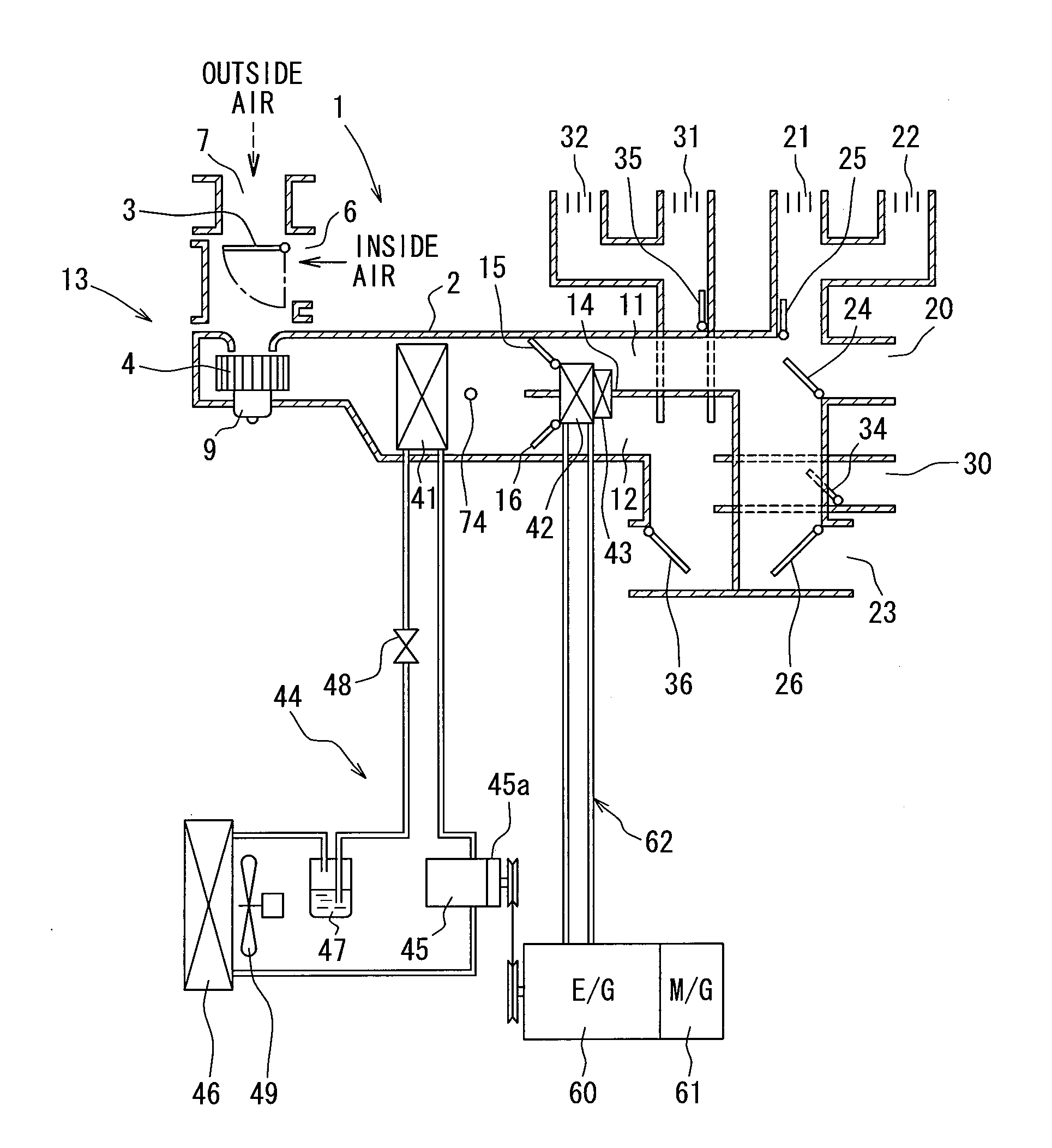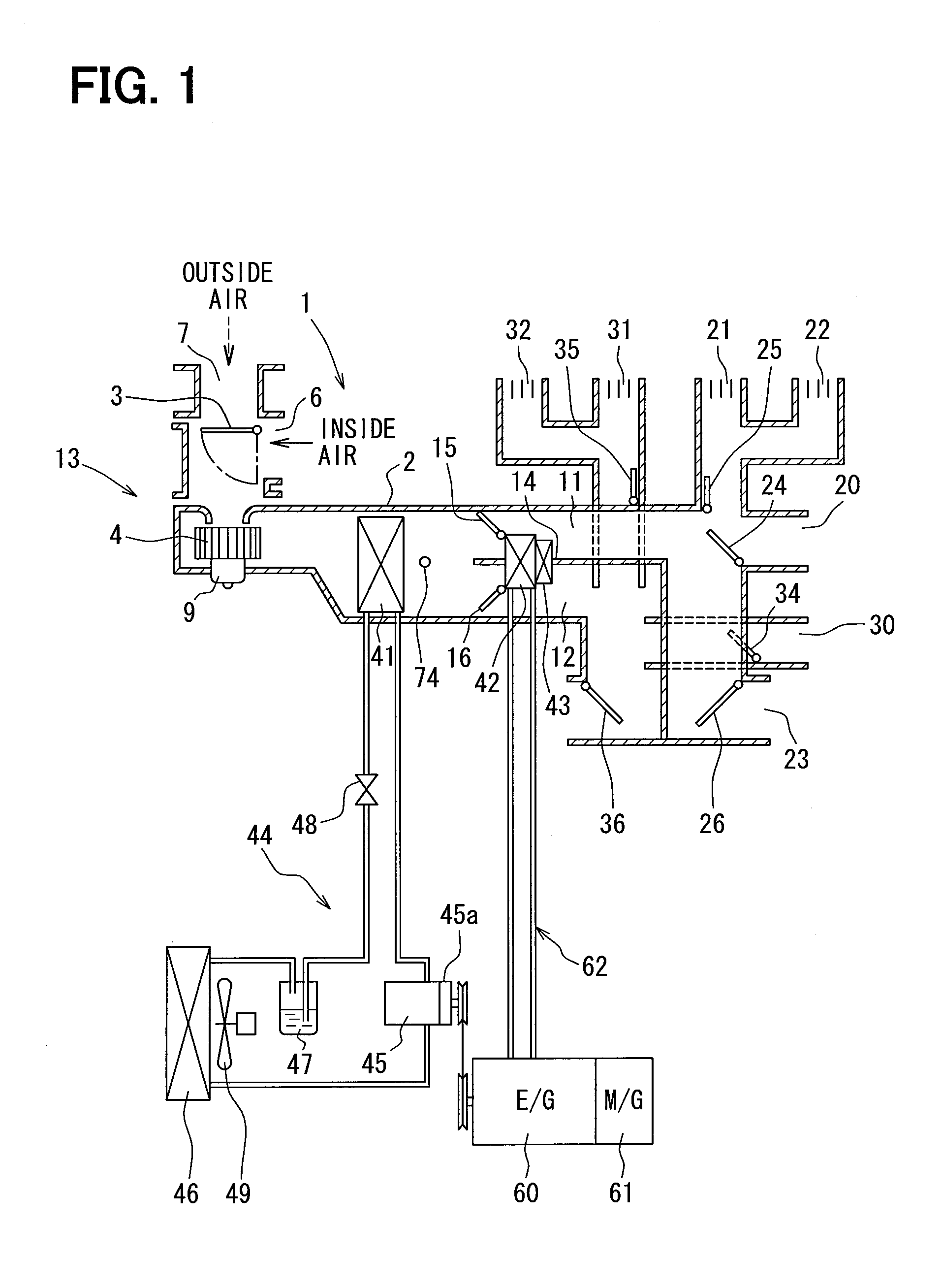Air-conditioner for vehicle
a technology for air conditioners and vehicles, applied in vehicle components, vehicle heating/cooling devices, railway heating/cooling, etc., can solve the problems of increasing fuel consumption and worsening energy efficiency, and achieve the effect of reducing fuel efficiency, reducing heat dissipation, and reducing air conditioning capacity
- Summary
- Abstract
- Description
- Claims
- Application Information
AI Technical Summary
Benefits of technology
Problems solved by technology
Method used
Image
Examples
Embodiment Construction
[0048]An embodiment will be described with reference to FIGS. 1-15. An air-conditioner 100 according to the embodiment is mounted in a hybrid car. The hybrid car is constructed to include an engine 60 for traveling, an engine start equipment (not shown), an electric motor 61 for traveling, a hybrid ECU (not shown), and an engine ECU 63.
[0049]The engine 60 is connected to drive an axle of the hybrid car in the attachable and detachable state. The electric motor 61 is connected to drive the axle of the hybrid car in the attachable and detachable state. The electric motor 61 is connected with the axle when the engine 60 is not connected to the axle. Therefore, either one of the engine 60 and the electric motor 61 is connected with the axle, and the other is not connected to the axle. The electric motor 61 is constructed to be automatically controlled (for example, inverter control) by the hybrid ECU. The engine start equipment starts the engine 60. When a run of the hybrid car and a ch...
PUM
 Login to View More
Login to View More Abstract
Description
Claims
Application Information
 Login to View More
Login to View More - R&D
- Intellectual Property
- Life Sciences
- Materials
- Tech Scout
- Unparalleled Data Quality
- Higher Quality Content
- 60% Fewer Hallucinations
Browse by: Latest US Patents, China's latest patents, Technical Efficacy Thesaurus, Application Domain, Technology Topic, Popular Technical Reports.
© 2025 PatSnap. All rights reserved.Legal|Privacy policy|Modern Slavery Act Transparency Statement|Sitemap|About US| Contact US: help@patsnap.com



